Before a new customer can visit your website and buy your product, they must click.
They might click on a Google search result, an ad, a Facebook post, or a link in an email. The click brings them to your website.
The more people that click, the more potential customers you have on your site. To increase sales, increase the click through rate (CTR).
It sounds simple enough. But how do you increase your CTR? And how do you know if your current CTR is any good?
This article has the answers. Keep reading to find out what CTR is, what counts as a good CTR, and how you can improve yours.
What Is a Click Through Rate?
Click through rate (CTR) refers to the percentage of people who click a link.
For example, if half of the visitors to a particular landing page click its CTA button, that CTA button has a 50% CTR.
Click through rate is a valuable metric for evaluating various marketing activities. For example, you can track the CTR of:
- Organic search
- PPC ads
- Social media posts
- Internal links on your website
How Do You Calculate Click Through Rate?
Calculating the CTR for a link is easy.
Start with the number of clicks your link got. Divide that by the number of views to your page, social media post, or ad or by the number of email recipients.
Then multiply the result by 100 to make it a percentage. That’s your click through rate.
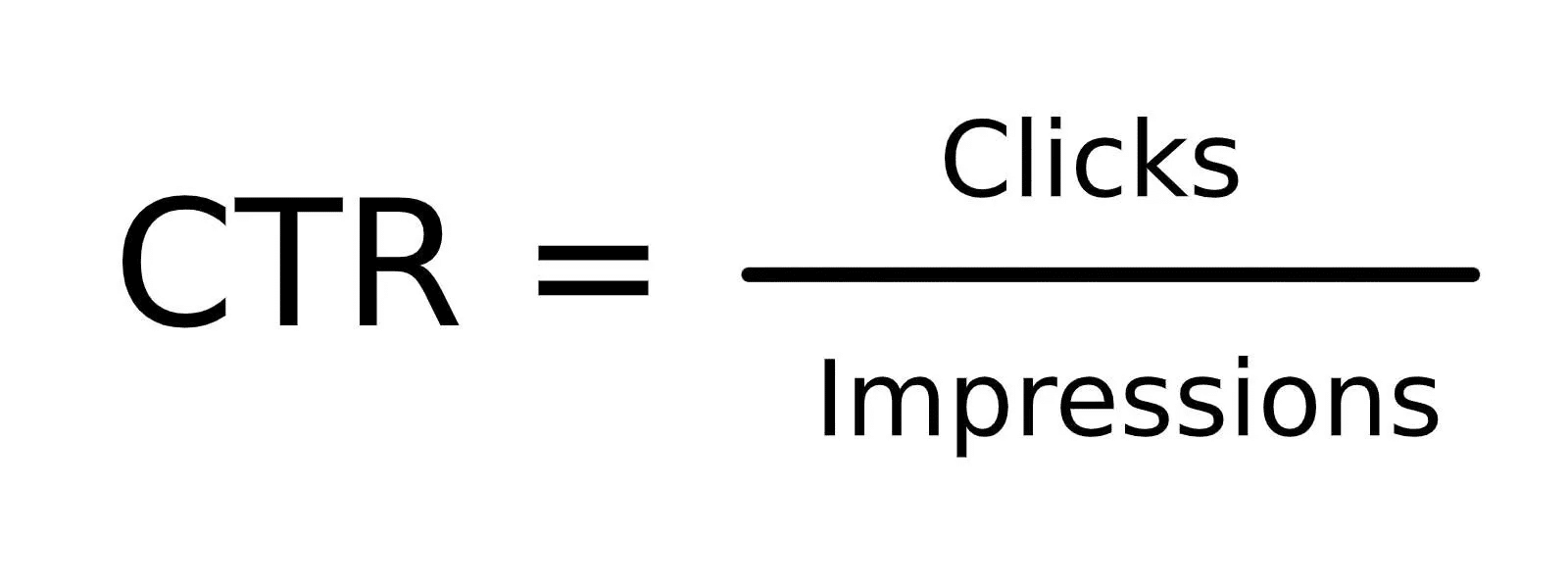
What Does Click Through Rate Tell You?
Say you sent out an email promoting your business. You can see from Google Analytics that 30 people came to your website from that email.
But is that any good?
It depends. If you only sent out 50 emails, it’s great. It means your email was so compelling and relevant to your audience that 60% of them wanted to find out more.
If you sent 5,000 emails, it’s less impressive. For some reason, your emails didn’t catch the attention of many potential customers. The low CTR lets you know that you should improve your campaigns to attract more business.
Tracking click through rates helps you understand what resonates with your audience.
Click Through Rate vs Conversion Rate
You don’t just want people to click a link to your website. You want them to convert to something like an asset download, an email list signup, or — best of all — a sale.
So you might think that conversion rate is a more important metric to track.
But your click through rate directly affects your conversions — the more people you can drive to your website, the more conversions you’ll get.
CTR and conversion rate both provide valuable information at different points in the customer journey.

Why Does Your Click Through Rate Matter?
There are so many website and marketing-related metrics that you could track. Why should you focus on CTR?
You Can Use CTR Data to Optimize Your Campaigns
Your click through rate lets you know what your audience likes. It can tell you that your customers love a funny subject line or that they’re more likely to click a red button than a blue one.
That information lets you adjust your campaigns for better performance.
CTR Affects Your Quality Score
This one only applies if you’re running Google Ads.
Google assigns your ads a quality score, which is their quality and relevance rating. Google uses the quality score to determine your cost per click and how it will prioritize your ad.
The quality score is essential if you want your ad to be cost-effective and get seen. Several factors go into determining quality scores, including CTR.
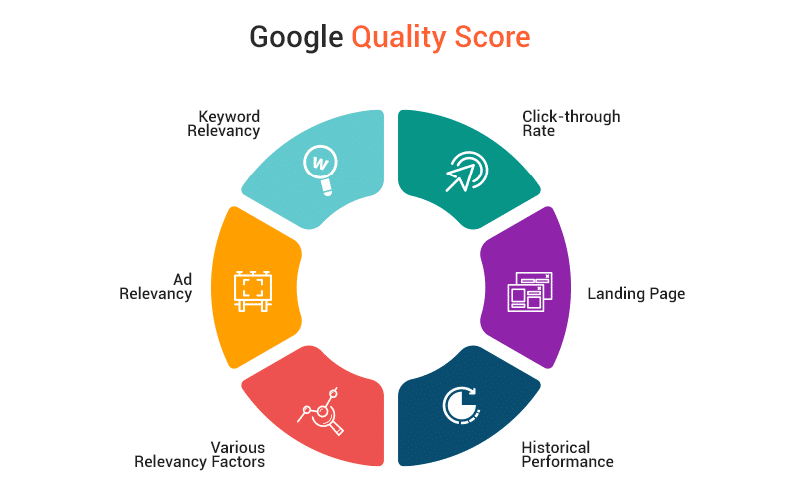
Organic CTR Is (Maybe) a Ranking Factor
Search engine optimization experts have been debating this point for years. No one knows if your organic click through rate directly influences your page rank on Google.
There’s a good chance it does. Google says that it uses “interaction data to assess whether search results are relevant to queries.” That interaction data probably includes clicks — we don’t know exactly how they factor into Google’s algorithm.
A higher organic CTR might improve your ranking, leading to more traffic, so it’s worth working on.
A Higher CTR Improves ROI and Revenue
Improving your CTR means you get more site visitors (and more conversions) for the same investment.
A single email, ad, or landing page will earn more revenue when the CTR is high. That makes your marketing efforts more cost-effective.
What Is a Good Click Through Rate?
There’s no correct answer to this question.
A “good” CTR for your business will depend on a combination of factors. We’ll get into some benchmarks in a bit, but the important thing isn’t how you compare to other companies — it’s whether you’re improving on past efforts.
What Factors Affect Click Through Rates?
Here are a few things that can impact your click through rate. For more details on optimizing these factors to get a better CTR, scroll down to the “how to improve your click through rate” section below.
Factors that affect CTR include:
- Relevance to your audience: People are more likely to click on something targeted to their needs or interests.
- Search engine ranking: Pages that rank higher on the search engine results page (SERP) get a higher CTR.
- Location of the link: A link or CTA button on the page or ad can affect how many people click.
- Visual appearance: Images, color, layout, and size affect CTR.
- Industry: Click through rates are higher in some industries than others.
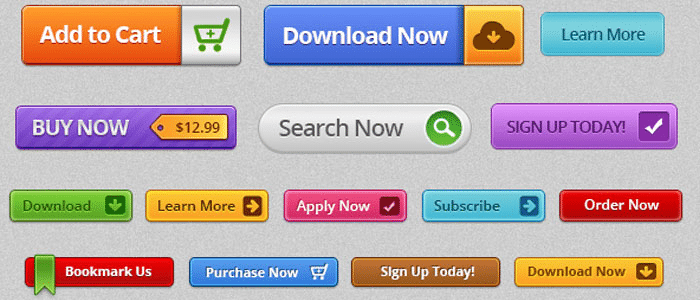
Every business will have a different benchmark for a good click through rate. But we know you want to see some stats.
Let’s look at the expected CTRs for a few different channels.
Organic Search Click Through Rates
Improving your organic search CTR is all about ranking higher.
The top result on a Google search page has an average CTR of 31.7%. The second result has an average CTR of 24.7%, and the third has 18.7%.
Only 0.78% of searchers click something from the second page.
By moving up just one or two spots, you could significantly increase your click through rate.
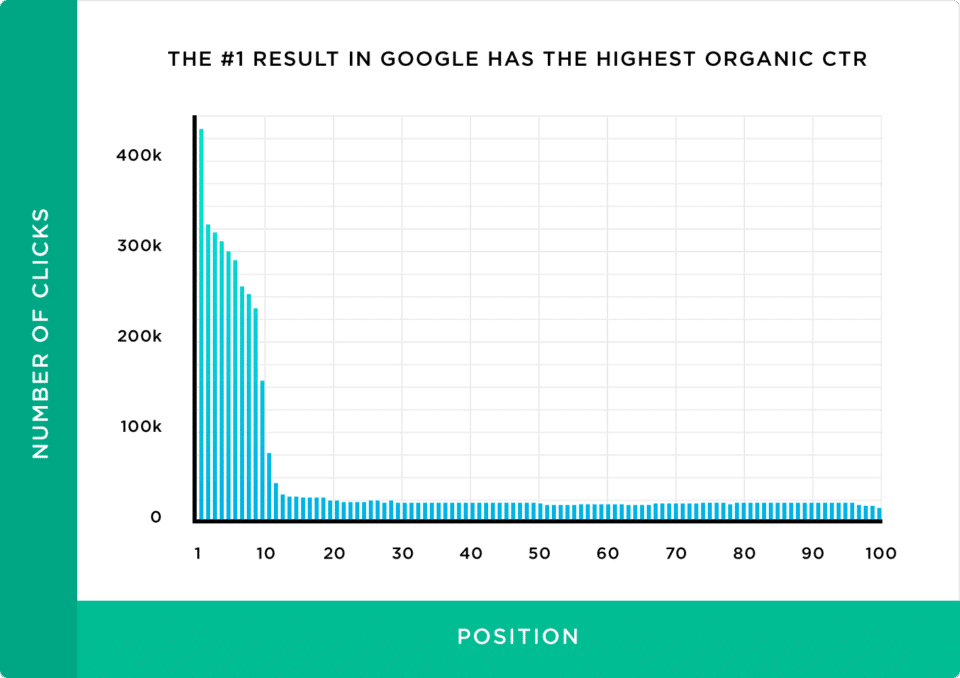
You can improve your rank on Google and other search engines by doing search engine optimization (SEO).
If you’re just getting started with SEO, we’ve created a beginner’s guide for you.
SEO includes actions like:
- Choosing keywords to target and adding them to your web pages
- Creating new content regularly
- Getting backlinks from high-quality websites to yours
- Make sure you follow technical best practices, like having a mobile-friendly site
Some keywords have more potential for a high CTR than others. For example, searches with more words get more clicks on average.
Let’s say you make it to position #3 on the SERP. You can expect a 5.15% CTR in that position for a one-word keyword. But for a four-word keyword, the average CTR of the third result is 10.43%.
Email Click Through Rates
According to Campaign Monitor, the average email CTR is 2.6%. Other email services have come up with different numbers.
Average CTRs vary a lot by industry. As you can see in the table below, emails from retail businesses only average a 1.1% CTR, while government and politics get a whopping 6%.
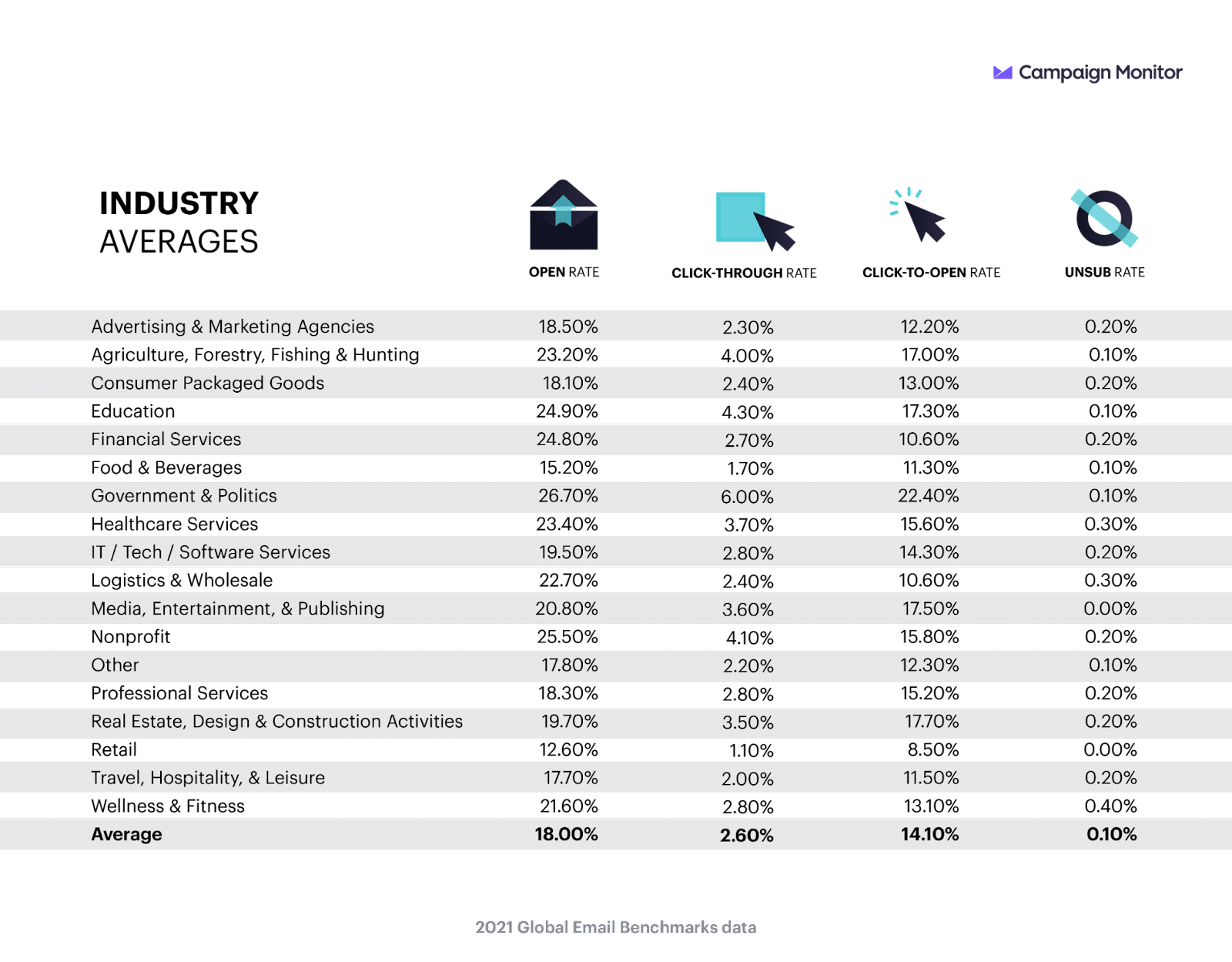
The best way to improve your email click through rate is to create engaging and relevant campaigns for your audience.
But that’s not the only factor.
For example, the time of day you send your email can impact how many people open and click it — email CTRs peak around 5 pm.
All major email marketing platforms let you see your click through rate. The best way to figure out what gets the best CTR is to run tests yourself.
PPC Ad Click Through Rates
Pay-per-click (PPC) ads include ads through Google Ads, Facebook Ads, or Microsoft Ads.
The average CTR for Google Ads is 3.17% on the search network and 0.46% on the display network, but this can vary widely based on industry.
The highest CTR is found in the dating industry at 6.05%, while the lowest is in the technology industry at 2.09%.
The average Facebook Ads CTR is 0.89%, and the average Microsoft Ads (formerly known as Bing Ads) CTR is 2.83%.
Targeting is vital for PPC ads. If you show a Facebook ad for kitchen supplies to 1,000 random people, it will get a lower CTR than it would if you showed it to 1,000 people who’ve expressed an interest in cooking.
8 Tips to Increase Your Click Through Rate
Even a few small changes to your campaigns can increase your click through rate (and conversions).
These are our top eight tips for improving your CTR.
1. Target Your Audience
Some people are never going to click your links.
Don’t worry about them.
When it comes to improving your click through rate, half the battle is simply putting your links in front of the right people. These are people whose personal interests or needs make them likely to take an interest in your message.
We’ve already talked about the importance of targeting in PPC ads. Your targeting options will depend on the ad network.
For example, ads on the Google Ad search network target people who search a particular term (among other factors). The strength of Facebook Ads is that you can target people with specific interests.
Making sure your ad matches your targeting choices will result in a better CTR.
To improve your email CTRs, segment your subscriber list.
Segments are subsets of your contact list that have something in common. For example, you might segment based on:
- Location
- Demographics
- Lifestyle and interests
- Behavior (past interactions with your website or emails)
Good list segmentation allows you to send highly targeted email campaigns. Someone who has come to your website and abandoned a shopping cart can get a different message than a new contact who has only downloaded a white paper so far.
2. Do Keyword Research
This tip applies to both paid and organic search.
Choosing the best keywords to target can improve your CTR and drive more traffic to your website.
Start by brainstorming as many relevant keywords as you can think of. Imagine what your ideal customer would be searching for and write it down.
Make sure to include long-tail keywords on your list.
Long-tail keywords are terms or phrases with a low search volume. They’re usually several words long — although, contrary to popular belief, that’s not part of the definition.
The cool thing about long-tail keywords is that they’re often quite specific. If you target a keyword like “baskets,” the CTR probably won’t be great. People who search that term might be looking for any basket.
But if you target “handmade wicker laundry baskets,” you’ll reach your people. Although that term has a lower search volume than “baskets,” the people who search it are more likely to click your link.
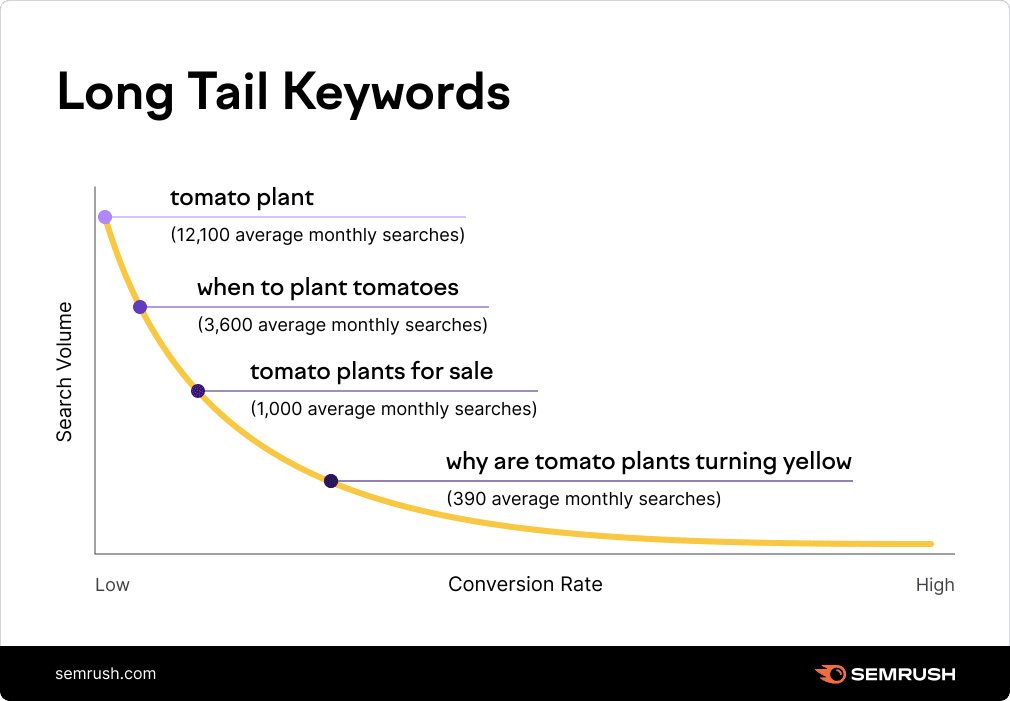
Another way to find keywords with a high CTR is to figure out what terms people are already searching to get to your site. Google encrypts a lot of that information, but you might be able to find some search terms on the “Performance” page of the Google Search Console.
Once you have your list of possible keywords, start narrowing it down. You can use Google’s Keyword Planner to find the monthly search volume of each keyword. Eliminate anything that doesn’t get any searches. You may also want to limit the very competitive high-volume keywords.
But the most important thing is search intent. Does someone searching for this keyword want to find content just like yours?
If so, it might lead to a high CTR.
3. Improve Your SERP Listing
You can do a few things to entice more people to click your link on the search results page.
Write Better Meta Descriptions
The meta description is the text below your page title on the SERP. Its purpose is to tell people what your page is about.
A good meta description convinces people to click. Be clear about what the user will get if they follow the link. Will you answer a specific question? Offer a helpful download?
Consider including a CTA, like “learn more.”
Optimize Your URL
Your URL is one of the few parts of your page that the searcher can see before clicking. Use it to your advantage.
Choose a URL that accurately describes your page is offering, like example.com/learn-to-juggle or example.com/running-shoes.
Simplify Your Title
The first thing most people do on a SERP is skim the titles of each result to find the most relevant one.
Your title tag should make the purpose of your page immediately clear.
4. Be Mobile-Friendly
As we’ve discussed, your ranking on the Google SERP affects your organic CTR.
If your site isn’t optimized for mobile devices, it could be holding you back on Google and preventing you from achieving a higher click through rate.
Google has moved to mobile-first indexing. That means Google’s crawling, indexing, and the ranking system uses the mobile version of your site rather than the desktop version.
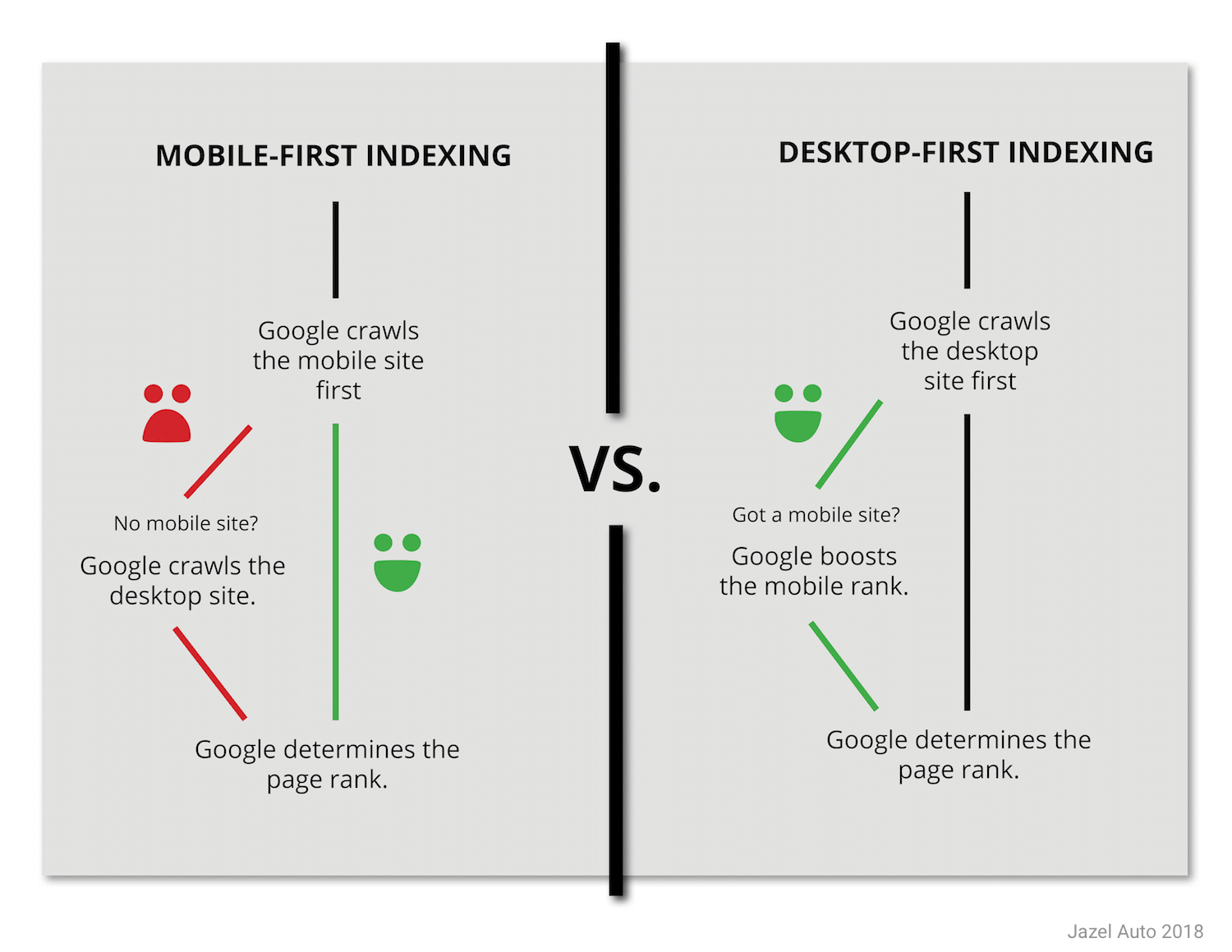
If you’re not sure whether your website is mobile-friendly, you can test it here.
Unless you’re using an older theme or haven’t updated recently, your WordPress site is probably already mobile-responsive. It never hurts to run through your site and make sure.
5. Write Great Email Subject Lines
If they don’t open your email, they can’t click your link. And if your subject line doesn’t interest them, they won’t open.
The best way to find out which subject lines resonate with your audience is to run A/B tests — a feature available from most email marketing platforms.
But to get you started, here are some tips for writing great subject lines:
- Communicate the benefits of opening the email. Is there an offer inside? Will they learn something interesting?
- Personalize the subject line. Email marketing software can help with this.
- Add urgency (when appropriate). Let them know they have to act now.
- Be catchy and/or humorous.
- Ask a compelling question. For example, “Is your data safe from hackers?”
- Don’t overuse caps, punctuation, or emojis.
- Keep it short.
6. Use High-Quality Images in Ads
If you’re running ads with images, make sure the ones you choose are high-quality and attention-grabbing.
Most people scroll right past ads, so you don’t have much time to show the viewer what you have to offer. Display your product, logo, or message clearly.
Images with text can work well, but don’t use too many words. People won’t stop reading them.
Test your ads with different images and see what works.
7. Make the Link Stand Out
People are more likely to click a link or CTA button if it grabs their attention.
There’s not much you can do about your link on the organic search results page. But for display ads, emails, and landing pages, you can experiment with variables like:
- Color
- Size
- Placement
- Text
On a landing page or in an email, try to put your button or link “above the fold,” meaning people don’t have to scroll too far to see it.
If you’re using a CTA button, make sure it’s large enough to read and that the text is legible. If your email subscribers have to squint at small orange text on a red button, they’re probably not going to click.
Be concise. A link that says “Get the ebook” will catch a reader’s eye more than “Click here to download the free ebook on industry trends today.”
8. Test, Track, and Optimize
We hope these suggestions help you improve your CTR, but no list of tips can compare to the things you learn by running A/B tests.
A/B testing is a way to compare two variations of a web page, email, or ad to see which one performs best. For example, you could send the same email but with different subject lines.
One subject line is serious, and the other has a pun.
If the punny subject line gets a higher CTR, you might consider doing more humorous subject lines in the future.
You can A/B test your WordPress website as well.
You can maximize your click through rates and increase traffic to your website through continual testing and optimization.
Summary
Click through rate is an important metric that helps you understand your audience. Targeting the right people with the right message can increase your CTR and drive more traffic to your website.
The more traffic that comes in, the greater the potential for conversions.
Want to get even more conversions from your site visitors? Check out our conversion rate optimization tips.



Leave a Reply